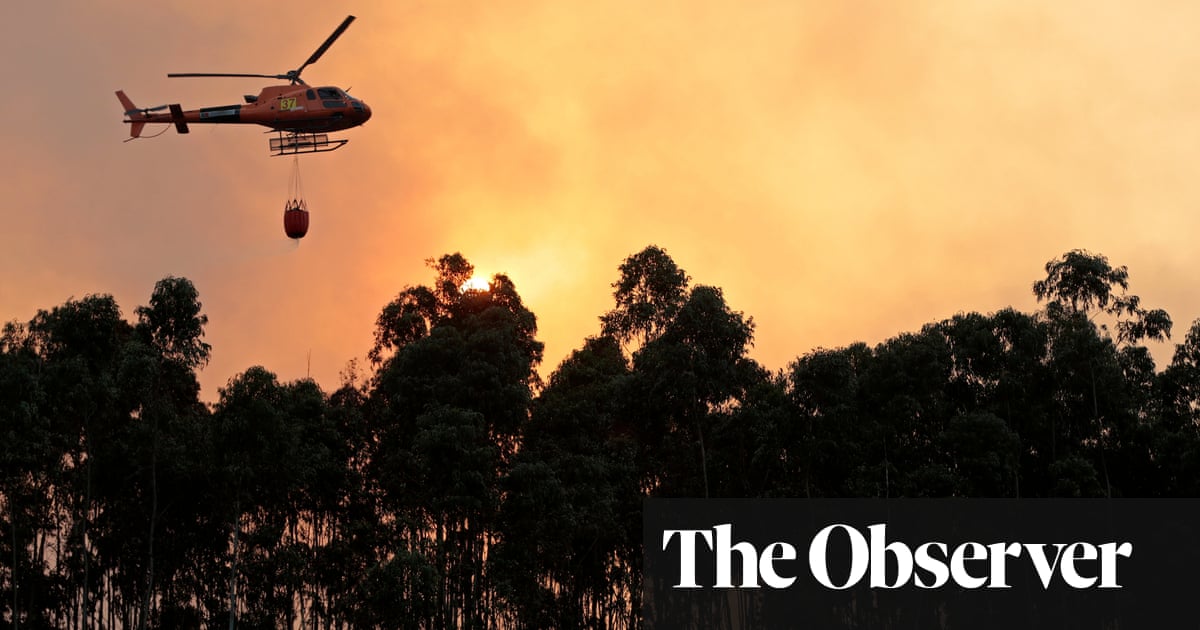Heatwave affecting parts of southern Europe reaches new intensity, with temperatures rising to 45C

Marcelino Raimundo, 68, has seen many summers in Amareleja, the small Portuguese town that is consistently one of the hottest places in Europe. “Every year we see temperatures rise above 40C,” said Raimundo, his long-sleeved shirt unbuttoned, as the chirps of cicadas reached a climax in the stifling heat. “But the weather is changing: only last week we had 33C, and now it has jumped to 45C. We have thunderstorms in January and October, when previously we would only have them in May.”
In the latest phase of a summer of extreme weather that has brought blistering heat to Britain, drought to the Netherlands and deadly wildfires to Greece, the heatwave affecting parts of southern Europe has reached a new intensity this weekend. According to IPMA, the Portuguese weather agency, about a third of the country’s meteorological stations broke temperature records on Saturday. The highest was 46.4C in Alvega, 120km from Lisbon.
In the southern Algarve, more than 700 firefighters battled a forest fire that had spread across 1,000 hectares near the town of Monchique; in the capital, Lisbon, the usually busy terrace cafes of the Chiado district were quiet as people stayed indoors. And in Amareleja, a sleepy town as famous for its hot summers as for its full-bodied red wines, the large outdoor thermometer at the Farmácia Portugal read 44.5C just after midday. Petrol station attendant Joaquim, however, was not fazed: the past couple of days had been abnormal, he said, but locals were “used to the heat and know how to adapt”.
They appeared to be adapting by simply staying indoors: there was little sign of life in the town centre. In nearby Moura and district capital Beja, streets usually at their busiest on the first Saturday of the month were mostly deserted. Further afield, flocks of sheep jostled for spots in the shade of the olive and carob trees that dot the parched fields. Cows stood motionless in the baking heat.
The high temperatures in Portugal and Spain are caused by a plume of warm air from the Sahara, which yesterday turned the sky an eerie orange in places, including above Amareleja.
In 2003, when Amareleja set the record for the country’s hottest temperature – 47.4C on 1 August – more than 2,000 people died as a direct result of the heat. Official figures on this summer’s heat are expected to be made public at the end of the year. A worker in the accident and emergency section of Portimão Hospital in the Algarve said the heat appeared to have taken a toll. “We have seen a rise in the number of falls, and this among people of all ages,” said the health worker, who preferred to remain anonymous. “There has also been an upswing in people requiring psychological assistance, as the heat also affects people’s mental health.”
In Spain, the heatwave is thought to have claimed three lives since Wednesday. Two men, aged 78 and 41, are believed to have died from heatstroke in the south-eastern region of Murcia, while a middle-aged man collapsed with the same condition on a street in Barcelona and later died in hospital. Spain’s meteorological office, Aemet, issued red alerts for four southern and south-western regions yesterday as temperatures approached 44C in parts of the country. Three Andalucian provinces – Huelva, Seville and Córdoba – were put on high alert, as was Badajoz, further north in the Extremadura. Spain’s all-time record of 46.9C was set in Córdoba in July 2017.
In Lisbon, Belarmino Teixeira said the heat had affected his normally busy restaurant. “People avoid going out. Clients arrive only after 9pm.”
The Civil Protection Agency has been sending out text messages in English and Portuguese warning of fire risks and urging caution in the exceptional heat.
Teixeira, 40, said he had not been out for two days. He was working from home as he and his partner tried to keep their home cool for their newborn baby. Windows and blinds were shut, and the fans were on all day. The flat resembled a bunker. “I can’t recall weather like this,” he said.
Read more: www.theguardian.com








![[Video] How to get rid of bed bugs in Toronto](https://www.thehowtozone.com/wp-content/uploads/2019/10/maxresdefault-2-100x70.jpg)


